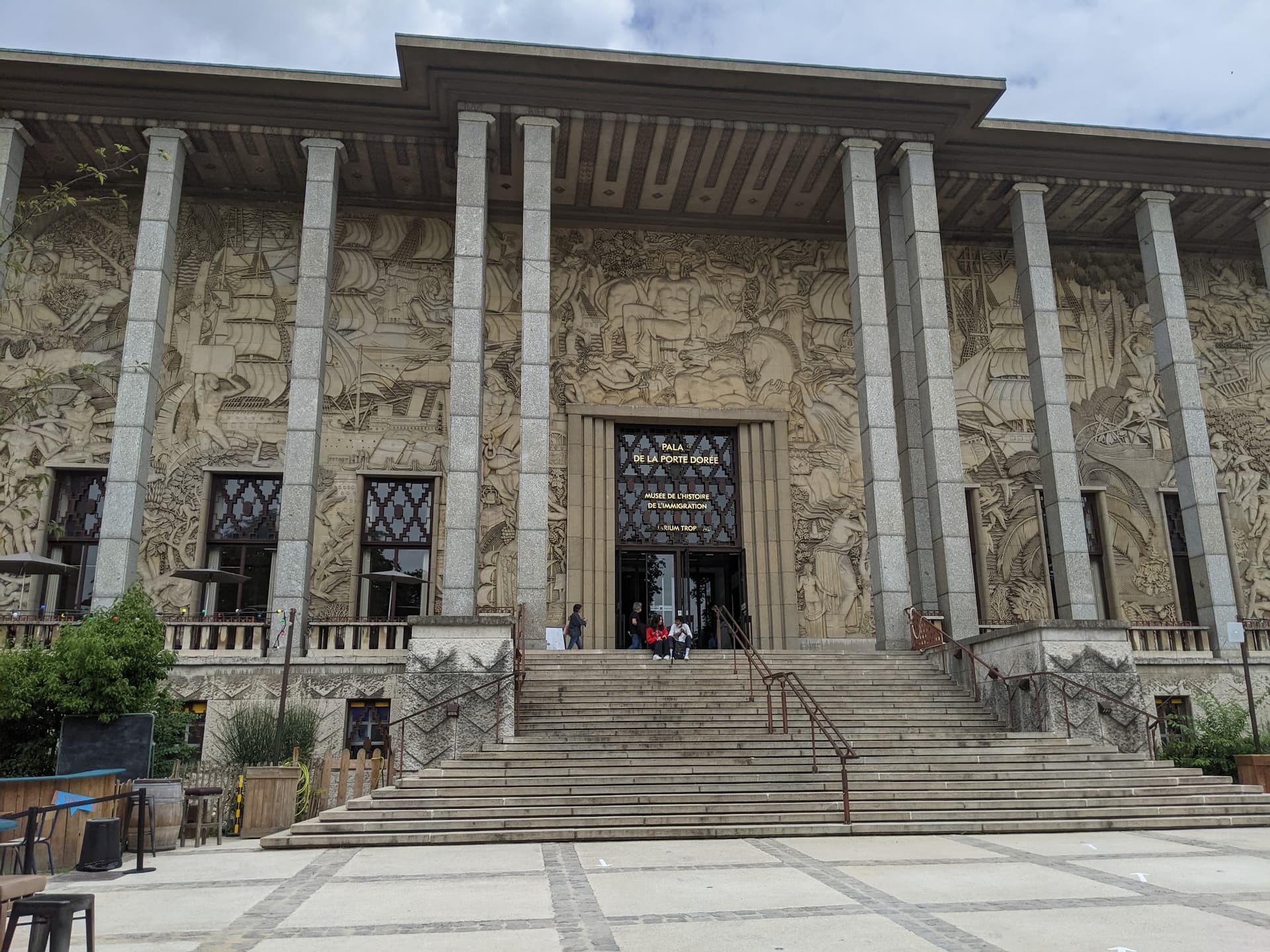Audio GuidePalais de la Porte Dorée
Aquatic life including crocodiles, sharks and electric fish, kept in a 1930s exhibition hall.
Palais de la Porte Dorée is a striking Art Deco building in the heart of Paris, built in the late nineteen twenties and early nineteen thirties for the Colonial Exposition. Designed by architect Albert Laprade along with Léon Jaussely and Léon Bazin, it originally served as the Musée des Colonies. The building’s graceful symmetry, vast façade, and use of natural light showcase a blend of classical and modern influences.
On the façade, one sees a large bas-relief created by Alfred Janniot. This work tells the story of the wealth and natural beauty of the French colonies. Inside, a spacious central hall once hosted grand colonial events. A large fresco by Pierre-Henri Ducos de La Haille fills this room, celebrating the cultural and economic contributions of the colonies. Two oval salons decorated with exotic details and elaborate furniture provide further glimpses into the past.
Today, the building tells a new story. It now houses the National Museum of the History of Immigration, the only museum in the country dedicated to immigration history and culture. In the basement, there is a tropical aquarium that displays a vibrant array of aquatic life, including creatures like crocodiles, sharks, and electric fish, underscoring a commitment to environmental care.
This historical yet ever-evolving site offers visitors a unique journey through art, history, and natural wonders, inviting all to explore the interplay between France’s colonial past and its modern cultural narrative.






